Recently some states, such as Haryana, have passed laws to reserve jobs in the private sector for local candidates. The objective of such laws is to address India’s rising unemployment situation. Critics, however, argue that this will make the labour market more restrictive and could even lead to businesses moving out and investments falling in those particular states. As there is immense regional disparity across states, such laws could adversely affect low-income states with large populations migrating to big cities in search of liveihood.
There is also concern that enacting such laws could affect those economically laggard states which face high levels of internal migration to other prosperous states. States like Bihar, Madhya Pradesh, Rajasthan, and Uttar Pradesh account for about 50 per cent of India’s total inter-state migrants (Census 2011). These four states occupy 30 per cent of the country’s geographical area, housing about 37 per cent of the country’s population (Economic Survey 2020-21). In most development parameters, these states find a place at the bottom of the rankings. However, there is a huge disparity within these states.
Disparity between states
In a previous article, we looked at the regional disparity within three prosperous Indian states — Maharashtra, Karnataka, and Tamil Nadu. In this article, we shift our focus to Bihar, Madhya Pradesh, Rajasthan, and Uttar Pradesh. These four states were given a notorious acronym of BIMARU states by the demographer Ashish Bose, in the 1980s, owing to their dismal performance in health indicators. However, the growth performances of these states have been impressive in the last two decades. But, is the growth equally distributed among various regions of these states? We compiled data of district domestic product (DDP) from the websites of the Directorate of Economics and Statistics (DES) of these four states. We have used the data from 1999-2000 to the latest available for these states: for Uttar Pradesh (till 2017-18), for Madhya Pradesh and Rajasthan (till 2016-17). The latest official data available for Bihar is till 2011-12. We focus mainly on the share of the districts in the state’s economy. Three new states were carved from three of these four states in the year 2000: Jharkhand from Bihar, Chhattisgarh from MP, and Uttarakhand from UP. We exclude them in our analysis here.
Also read: Prosperous Maharashtra, Karnataka hide a disparity within. Development is not for all: Study
Analysing contribution to state economy
Bihar started on a growth trajectory in the early 2000s. In 1999-2000, its capital city Patna contributed over 21 per cent to the state’s economy (Figure 1). This share has consistently increased to about 26 per cent during 2011-12. In terms of per capita income, the DDP per capita for Patna was 3.7 times the state average in 1999-2000. This increased further to 4.2 times (2004-05), and later to 4.4 times (2011-12). Both these measures, the share in the state’s economy and the district’s per capita share, are among the highest across Indian states. This indicates that it is Patna that has been the engine pulling up the state’s economy — there are no other growth centres in the state.
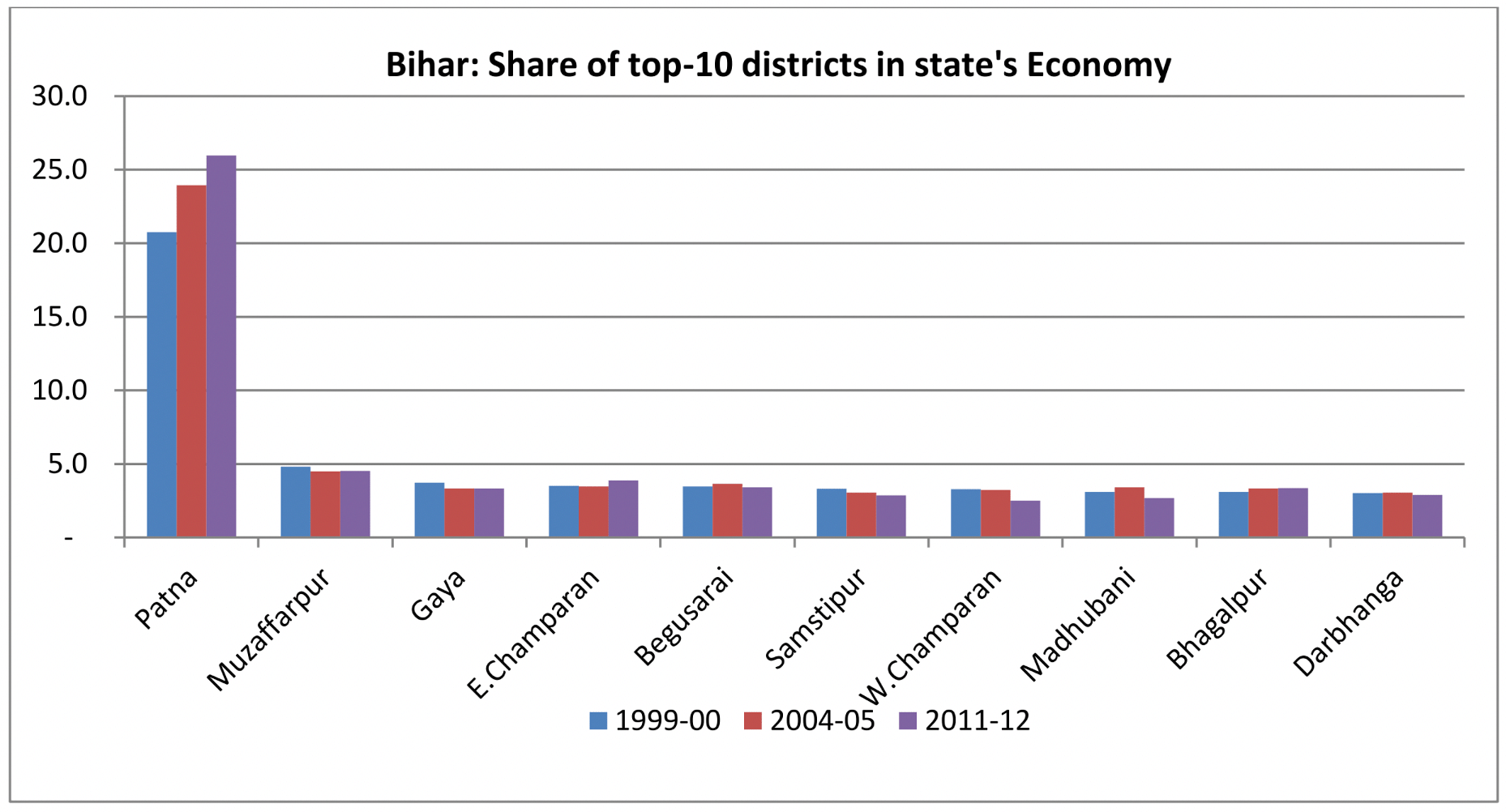
Indore has been the leading district among 50 districts in Madhya Pradesh. In 1999-2000, it contributed just below 10 per cent to the state’s economy. However, its share has been falling over the years. In 2016-17 its contribution was just 6.7 per cent. Bhopal and Jabalpur are among the top-3 districts. It is important to note here that the shares of these three districts have declined since 2004-05. A similar trend is apparent with Ujjain and Gwalior. Sagar and Dewas are the only districts that have shown consistent rise in their shares. In per capita terms, these top-10 districts have a per capita contribution of more than the state’s average. Indore and Bhopal have the highest per capita contribution with just over 1.5 times (2016-17) the state average. Overall, Madhya Pradesh seems to have low regional disparity. But a very modest range of per capita contribution for the top-10 districts hints towards the absence of any stand out centers in the state.
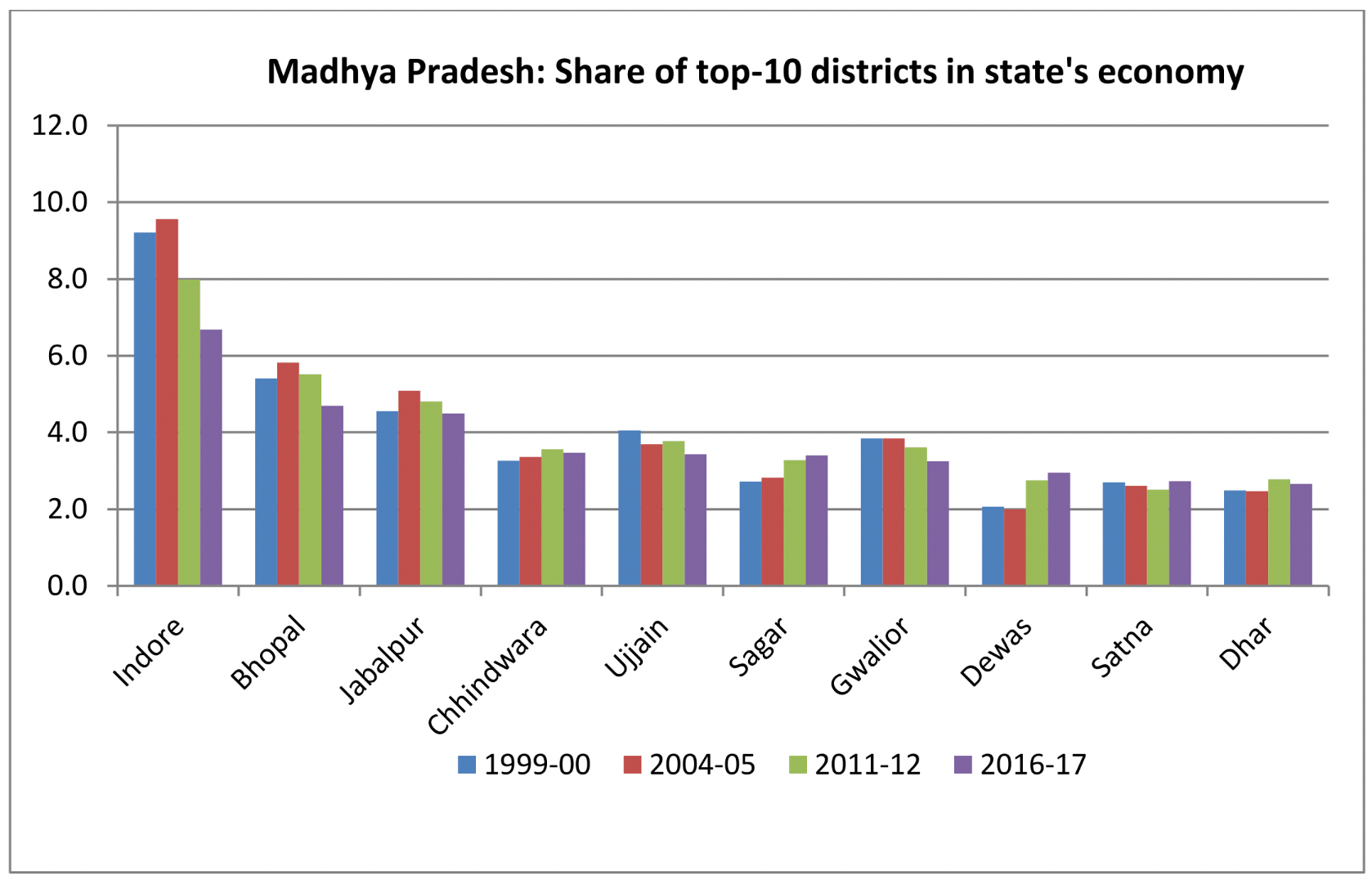
Jaipur is the leading district among 33 districts of Rajasthan. Its share has remained in the 12-13 per cent range over the years. Alwar, a district bordering with Jaipur, ranks second contributing around 6-8 per cent towards the state’s economy. Barmer has shown a rapid rise in the period since the mid-2000s. In 2004-05, its contribution to the state economy was a mere 2.5 per cent. This, however, increased to 4.6 per cent in 2011-12 and to 6.1% in 2016-17. As a result of this, Barmer’s per capita income has significantly increased. It rose from just 0.7 times the state average income (2004-05) to 1.6 times (2016-17). Jaipur’s per capita income has remained about 1.3 times the state’s average.
Also read: The Indian state where development is more on a par with Pakistan than India
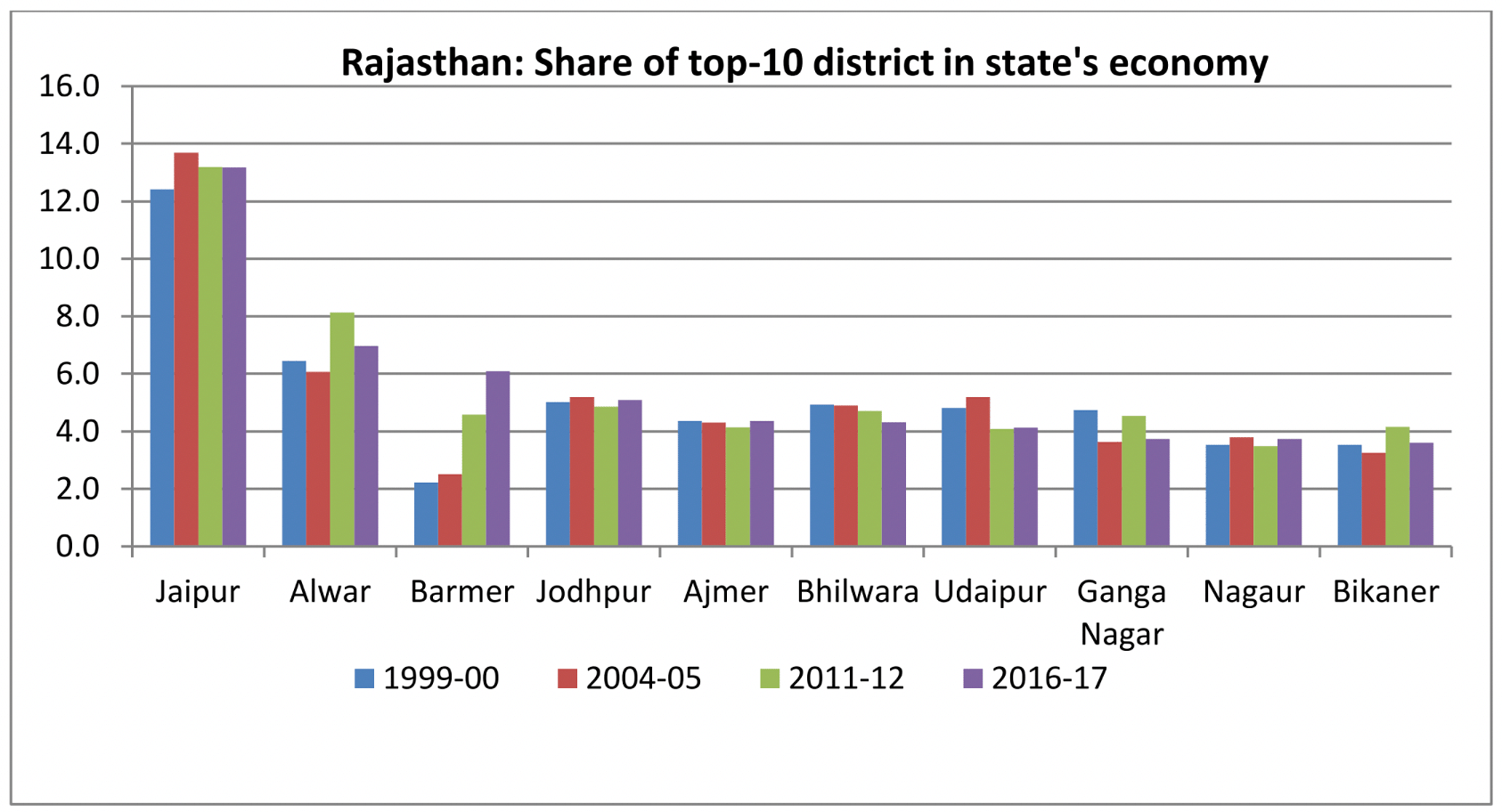
The 75 districts of Uttar Pradesh are divided into four economic regions: Western (30), Eastern (28), Central (10) and Bundelkhand (7). The Western region is relatively better developed, and contributed to over half of the state’s economy (2017-18), and 7 of the top-10 districts shown here belong to the Western region.
During 1999-2000, Noida (Gautam Buddh Nagar) accounted for just 2.6 per cent towards the state’s economy. But after 2009-10, it has seen a rapid rise, and as of 2017-18 contributed to over 9 per cent of the state’s economy. As a result, its per capita income has surged 10 times the state average. The contribution of Lucknow has remained at around 3-4 per cent over the years. A similar trend appears in the case of Ghaziabad. The per capita income for these two districts is 1.6 times (Lucknow) and 1.4 times (Ghaziabad) the state average. Noida and Ghaziabad have the advantage of being close to New Delhi. Agra has shown a slow and steady rise in its relative share in these years.
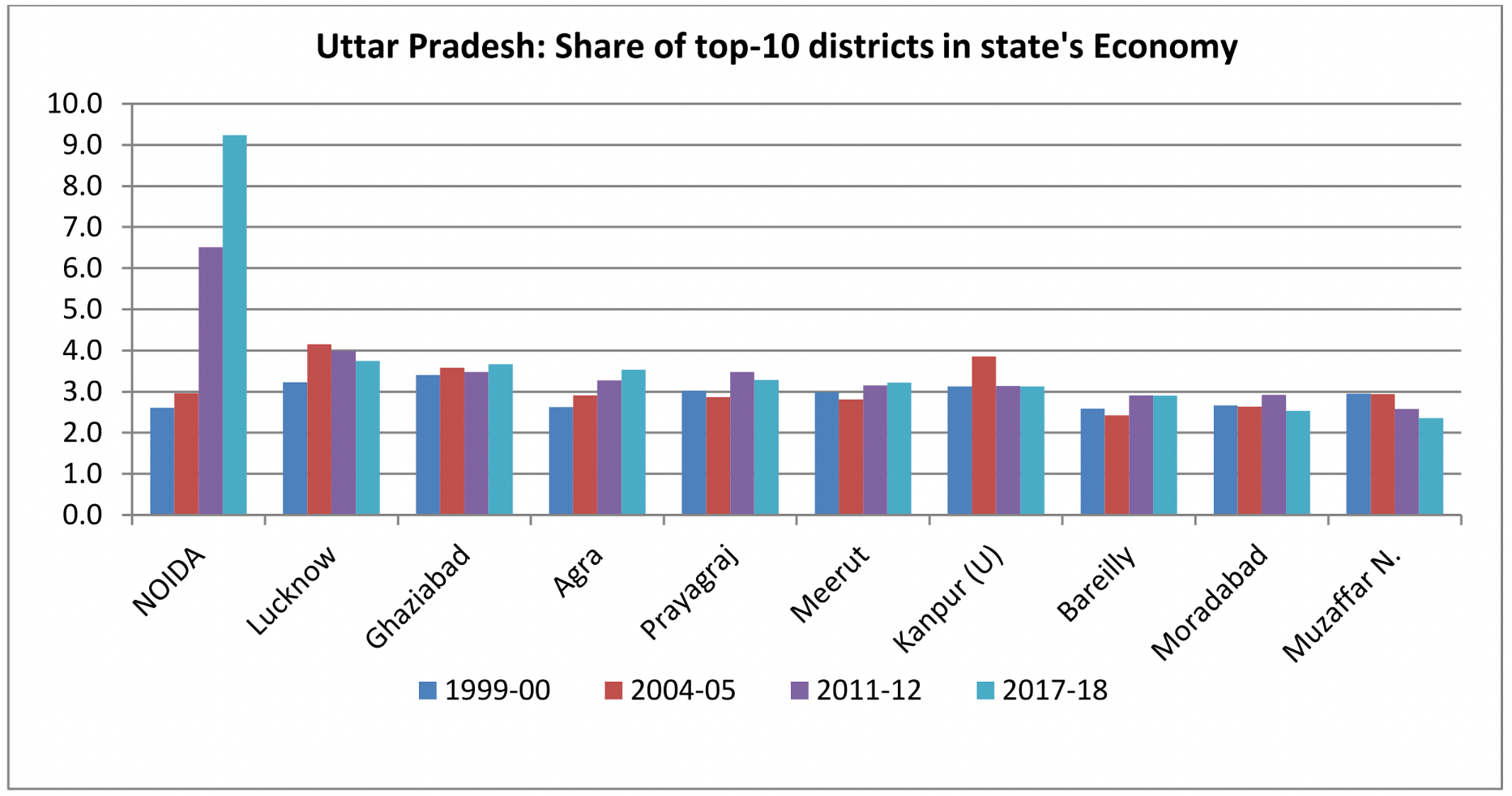
The above observations suggest that similar to the prosperous states, even the laggard Indian states have substantial inter-district disparity. Bihar demonstrates the most extreme case where the capital district is the main engine of the state economy. The state has been unable to develop a second growth center. In the case of UP, thanks to its proximity with the national capital, Noida has emerged as the biggest contributor to the state’s economy. This also appears to have deepened the already existing east-west economic divide in the state. The regional disparity in the other two states, Madhya Pradesh and Rajasthan, is not huge. But these states lack growth centers which can drive the economy towards a higher growth trajectory. The states should endeavour to bridge the economic gap in the post-Covid world.
Vikash Vaibhav is Assistant Professor, Dr. B.R. Ambedkar School of Economics, Bangalore.
Varun Kumar Das is Assistant Professor, Delhi School of Economics. Views are personal.


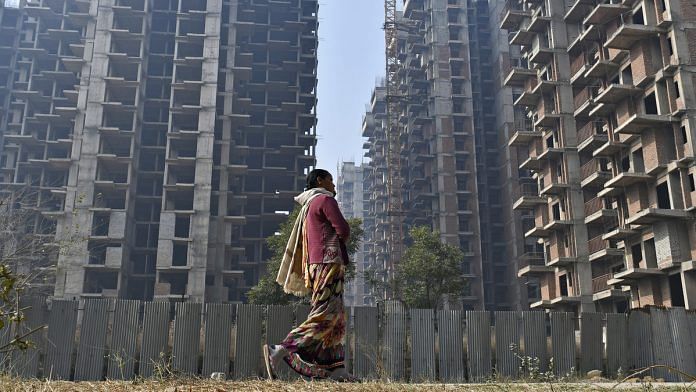

with high unemployment and layoffs reversal seen
As long as Noida stands as a model for Indian Industrial development, India has a very poor chance of making a go for it. Noida was a one time fluke unlikely to be repeated elsewhere. To repeat again, the IT will NOT be the future growth sector of India. The world is a lot more than coding, call center and itsy bitsy smart phones. Reminds me of Steve Jobs who insisted the future is 2.5″screen. The industry walked away and ultimately made apple reverse its prejudice. Indian infatuation with IT sector and Real Estate is a similar sad episode waiting to happen sooner than later.
Isn’t it the same for Karnataka (Bangalore), Telangana (Hyderabad), etc